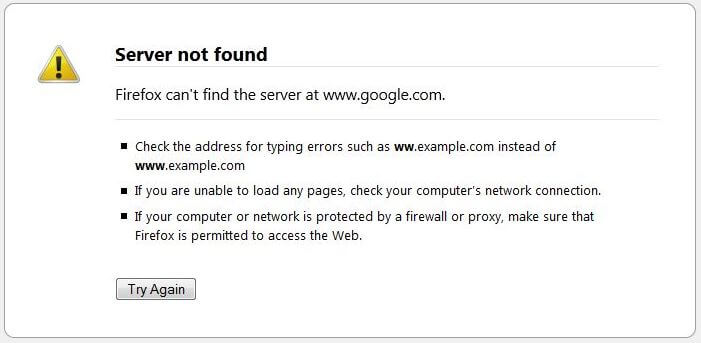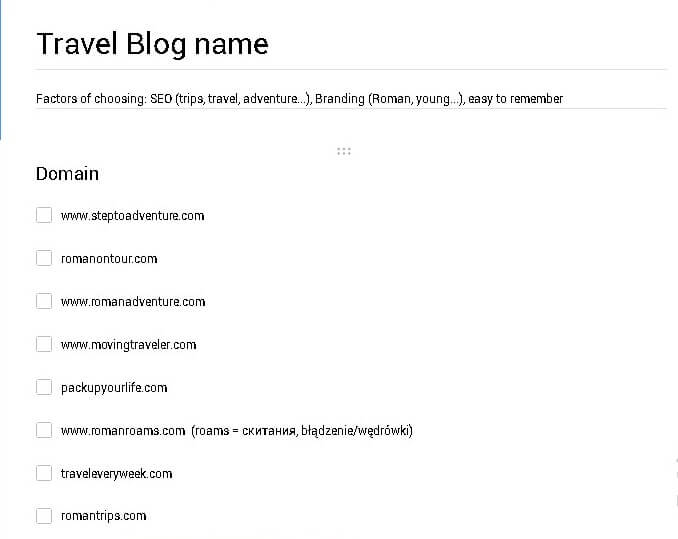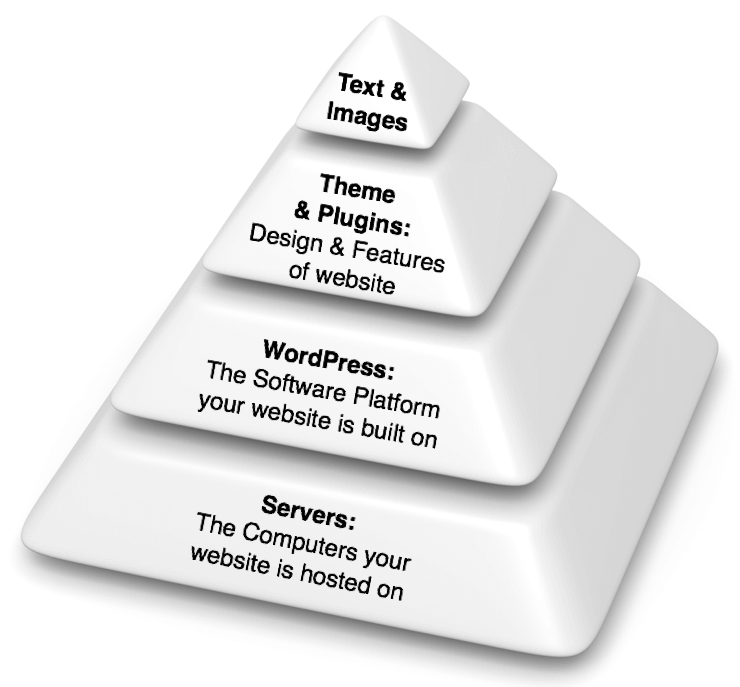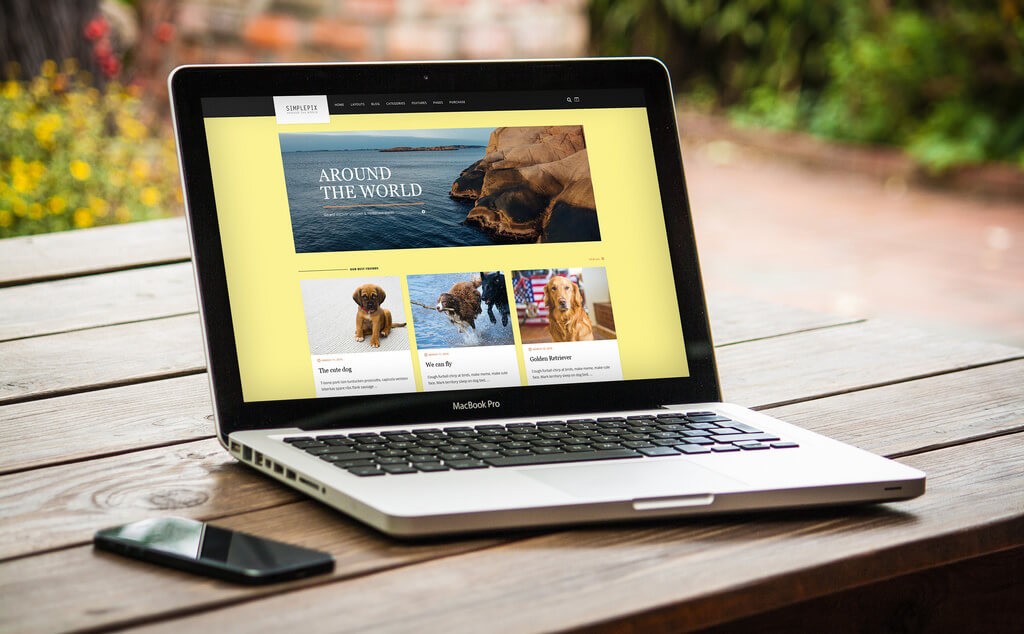How to Create a Travel Blog in 1 Hour and Make Money On It

You’ve been always dreaming of creating your own travel blog and traveling the world making money on it?
Nowadays, it is not only possible but also easy. There are lots of great tools that help you to become a successful travel blogger (or any other blogger) and start making money on it.
I’ve created my travel blog in 2 hours. I’ve also created the website of my travel marketing agency even faster.
Here, I will tell you, how I did it, and what are the steps to create your personal blog in just 1 hour.
Learn more about the specific steps to set up your website on WordPress and ways to make money on it.
This article includes affiliate links. It means that I get a small percent off your purchases done using some links in the article with no additional cost for you. The information and recommendations provided are unbiased.
Find a Great Blog Name

Of course, having a desire to create your own blog, the first step would be to find an appropriate name for it.
First, you need to think of the words that would characterize your blog.
You should be special in something, just being another travel blogger won’t allow you to make money on it. You can be specialized in your region. Furthermore, you don’t really have to travel to be a travel blogger. You can review great places in your hometown that you know very well. Giving something beyond the list of the most typical attractions is necessary to have readers. You can share some insider tips and tell about places that only locals know about.
If your blog will be about food and places to visit in Amsterdam, you could think of such words as Amsterdam, food, attractions, destination, guide, local guide, or explore. Depending on the level of budget, you could also think of such words as luxury, special, exclusive, budget, poor, cheap, and others.
Some other words can be about you. The difference between a website and a blog is personality. The blog is about you. So, you could include your name (Roman in my case), traits, what kind of traveler are you, and so on.
Having a list of such words, think of their combinations as your future blog name. Check the best ones in your web browser. Just type in ‘AmsterdamGuide.com’, ‘AmsterdamExplorer.com’, and others. Check the ones that are free. Amsterdam Guide redirected to Amsterdam.info website, while Amsterdam Explorer is on sale.
You can ask them, how much is it, but it may be very expensive. Better, search for some free domain name.
I found that JohnAmsterdammer.com and JohnTheAmsterdammer.com are free (‘Server not found’ message means that it is free). If your name is John, they could be great options for your Amsterdam as a local travel blog.

For an international website, better choose the .com domain ending, but if you want to be localized in some place, choose the ending of this country (.es for Spain, .pl for Poland).
When you have a list of free and good-sounding domain names, you can create a survey on Google Forms and ask your friends to vote for the best possible name for your blog.
Below is my survey. RomanRoams.com had the most votes, so I chose it. By the way, all the other domain names were free and should be still free. So, you can select one of them.

When you’re ready with your blog name, it’s time to start working. The timer for 2 hours has started!
2. Getting a Hosting and Domain
Now you need to choose a hosting and domain provider. Let’s analyze some of the options.
Free Hosting and Domain

There are many platforms that allow you to create your own blog for free. The most popular ones are Blogger, LiveJournal, Wix, WordPress.com (don’t confuse with WordPress.org), but there are many others. Their obvious advantage is that they are free, but you won’t own a website, you will have your own page on it (eg. yourblog.wordpress.com), so all the fame you get comes to the platform, not you.
Still, it is a good way to try writing a blog, to check if you can do it. If you just write for yourself or your friends and family, it is enough. But in this article, I want to tell you, how you can create a travel blog and earn money on it.
Low-cost Hosting Providers

For a beginner, it is enough to use some of the low-cost providers like GoDaddy, BlueHost and HostGator, whose services you can use starting from $3 a month. They are enough while you don’t have thousands of daily visitors. Most of them give you 30- or 60-day money back guarantee, so you can try if you like it.
Your domain name will usually come for free with it.
Premium Hosting Services
If you think of your blog rather like a business, it is worth to invest in a professional web hosting. You could rent a dedicated web server (for $3 you just share one server with other websites) at the same companies or premium web hosting providers like WP Engine.
Cloud Hosting
This is a more versatile solution as it uses a network of servers to manage, store, and process data. There are three major service delivery models.
- PaaS: Platform-as-a-Service
- IaaS: Infrastructure-as-a-Service
- SaaS: Software-as-a-Service
The type of hosting depends on the requirement of the client. For instance, Cloudways is a PaaS solution that provides a web hosting platform for business owners, digital agencies, store owners, freelancers, developers, and designers.
For bloggers, the PaaS model is the most appropriate as it assists in server management and accessing the web application from one platform. Furthermore, there’s a dedicated technical support team that ensures the security updates are up to date and that the server’s processor and RAM are at optimal performance and are not overclocked.
An example of PaaS is Cloudways that provides users with website optimization through it’s stack and CloudwaysCDN to keep website load time at minimum. Signing up with this managed cloud hosting platform allows the blogger to choose a cloud infrastructure (DigitalOcean, Linode, Vultr, Amazon Web Services, Google Cloud Engine) and a web application to deploy (WordPress, in this case) within 10 minutes.
First of all, you’ll need to sign up for hosting (any other provider is also fine, Cloudways is just an example). The process is relatively simple and straightforward.
Registration on Hosting Website
Registering using any of the three options takes just several minutes. You will have some settings in the beginning (most of them cost additional money). I suggest adding SSL (stands for Secure Sockets Layer), which gives your site https:// protocol instead of http://. The ‘s’ stands for security. It became more important for search engines recently, so it improves not only security, but also your position in search results.
Another thing to add is Domain Privacy Protection, which hides your personal data from the website. You don’t want those thousands of people that visit your site to know where you live and what is your phone number.
One thing you need to know, usually, when you register on hosting provider website, you have to pay for 1-2-3 years at once. The longer the period, the cheaper the monthly price. You can try with the minimum period available, I chose 2 years. 2 years with both of the additional options cost me less than $100.
Content Management Systems

Most of those paid hosting providers have built-in CMSs (Content Management Systems, or simply website builders) like WordPress, Joomla, Drupal, Magento and others. If you know web programming, you can create your website with an HTML, CSS and JavaScript code (or any other), but these systems are bases for your content. So, you simply add pictures and text, which is embedded into the website’s code with the help of your CMS automatically.
The most popular CMS is WordPress, while some others can be most suitable depending on the type of your website. For example, for an ecommerce website, Magento or PrestaShop may be the best options. Check this article to choose the most appropriate one.
If you don’t want to analyze too much, choose WordPress. It is simple and has a lot of documentation in case if you have technical issues.
3. Start Building Your Travel Blog on WordPress
Now, when you’ve registered on the hosting provider website, you can start building your travel blog. I will tell you how to do it with WordPress, but other CMSs have a similar installation.
Just click on the Install WordPress button and it is done within a minute. Wordpress is pretty intuitive, so you won’t have problems with it, but if you do, here is some WordPress Documentation and a video about managing WordPress site.
So, all the time we’ve spent on creation of your travel blog is just 3-4 minutes to register and a minute to install WordPress.
4. Install a Blog Theme

You can consider WordPress a skeleton and the blog theme clothes of your blog (maybe, underwear, as you will change the look of your blog after that). Hard to imagine a skeleton in underwear, but your content will create his body.
Remember, theme will not only change the look of your travel blog. Other factors that depend on it are page load speed, compatibility with different plugins, and possibility to create a multi-language website.
Free WordPress Themes
There is a long list of free themes available on WordPress. You can find them in ‘Themes’ tab inside WordPress. Check their reviews and features, play around with some of them and choose the most appropriate one.
Professional WordPress Themes
If you would like to become a professional travel blogger, sooner or later, you need to buy a professional WordPress theme. They cost from $25 to $70, which is not much for such an investment. A better theme will give you more functions and higher page load speed, which will retain more of your visitors, and will give you higher Google rankings.
Some of the professional WordPress themes providers include Themify and ElegantThemes.
5. Install Some Useful Plugins
WordPress plugins give you some additional features and functions. They optimize your code, images, count number of page views, add more security, improve SEO, manage email marketing, popups, enable some new types of galleries, post grids, sliders and much more. Still, don’t overuse them, as your visitors just won’t see your great content and your travel blog with lots of functions because they won’t wait until the site loads.
A rule of thumb is to have below 20 plugins on a website. It’s not so much as you might think. Try not to have duplicate plugins , there are some plugins that have many functions, so it could switch a couple others.
Most Useful WordPress Plugins

So, here is a list of the most useful plugins that almost every WordPress website should have. They are the plugins that would be enough for you, while here is a fuller list of useful plugins.
Yoast SEO – probably, the best WordPress tool for SEO. You can add a custom title and description that will be shown in search results. It also shows some metrics about on-page SEO like keyword usage in the text, titles, alt-tags, as well as readability.
Jetpack – responsible for security, tracks the number of malicious attempts on your site that it saved you from, connects you with your social media accounts and automatically posts about your new articles there.
Akismet – plugin against spammers.
AddToAny Share Buttons – floating or fixed share buttons on your articles, they might change their size and place depending on the type of device the user uses.
WP Hummingbird – has a list of plugins for different purposes, it is a paid plugin, while some of the functions are free. It allows to compress images, compress and combine code, enables browser caching, has some SEO plugins and more.
Polylang and Lingotek – best plugin combination for multi-language websites to manage different language versions.
AMP (accelerated mobile pages) – plugin to create a mobile-friendly version of your website. You can choose to serve this simplified version for all mobile users by default. It may increase readability and page load speed. Google pays attention on mobile-friendliness of the websites and penalizes those, which don’t work very well on mobile devices.
Another plugin I suggest is Google Analytics+ from the developers of WP Hummingbird, which puts your Google Analytics code into the website to track visitor statistics. To use it, you need to register on Google Analytics first.
Depending on your requirements, you can search for other plugins that may be useful for you. If you need a good slider for your website (if your theme doesn’t have one) simply search for ‘best wordpress slider plugins’ (responsive, free …) or anything else you would need.
Installing all those plugins plus, say, 2 other plugins of your choice would take less then 30 minutes. Now, it’s time to make your travel blog nicer!
6. Travel Blog Settings and Look

After installing all the necessary plugins, it’s time to customize your travel blog (or any other kind of blog). You should set some settings and then change the look of your website. You can take the main picture from your private photos or from one of the stock photo websites. For other settings and customization options, look here.
You will also need your own logo. To get one, check this website or order a custom one from some freelancer on Fiverr or Upwork. It won’t cost much, but it is important to get a good logo, as it will be difficult to change it later on. It is like changing your brand. Do you know that the most valuable brand in the world, Apple, is worth 170 billion dollars?! Can you imagine now that they would change their brand logo and now it would be a pear instead of an apple? Would you buy a Mac for the same price of some ‘Pear’ company? Of course, not.
Choosing the person to create your logo and ordering it would take just about 5 minutes, while customization of the website might take some 30 minutes.
Now, after those long 1 hour and 5 minutes of work, you have created a travel blog!
It is time to go public and write the first post!
7. Best Social Media for Travel Blog
As a way to promote your new travel blog and to have a stable audience and a group of supporters who like what you’re doing, you need to create accounts in major social media platforms.
Best social media for travel blog would be traditional Facebook, Instagram, Twitter, as well as Pinterest. You can also create an account on Tumblr, Bloglovin, StumbleUpon and some others. Your new articles will be posted automatically on most of them if you connect your Jetpack plugin with your social media.
Learn how to optimize your Facebook advertising
Of course, you want to connect with your audience, not just send them your new posts. Be active on social media.
Be active on #Social Media to grow your #travel #blog!
For a better promotion, use social media management systems like Hootsuite, Buffer or Sprout Social to post some new tweets and messages automatically. Still, you need to actively communicate with your readers in social media, because you are a person, nobody likes talking to a robot.
8. Writing Your First Post
After that, write your first post on your travel blog. Tell about yourself, what the blog will be about and some more. You can already start with some travel tips or stories. It’s up to you.
9. How to Promote Your Travel Blog

There are many ways of blog promotion.
- Social Media — As I already mentioned, social media is a good way to promote your blog.
- Paid Ads — You can pay in Google Adwords, Facebook Ads, Bing Ads, and others to promote your posts, so that more people would see it either in search (in case of Google, Bing and other search engines) or in their newsfeed (social media like Facebook).
- Blog directories – Some are free, some are paid. You just write some data about your travel blog with a link to it.
- Writing guest posts – You can try writing posts for established travel blogs for free (sometimes, you have to pay, not you get paid) to put a link to your website hoping that some people who would read this article would like to visit your travel blog.
- Asking your friends to help – You can ask your friends to share a link to your blog on social media or somewhere else.
- Networking – Find travel blogger events and meetups, send messages to travel bloggers, join Facebook groups for beginning bloggers.
- Simply writing good content – You should apply all or most of the ways above, but this one is a key (because, content is a key). You should write really great articles so that people would read you and follow you on social media not to miss any new posts.
They are just some of the ways to promote your travel blog, there exist much more, you can search for them on the internet.
10. SEO for a Travel Blog
Here, I won’t tell you all the theory of SEO, keyword research, ranking factors, on-page and off-page SEO and so on. But, I will give you a general understanding of how SEO for travel blogs looks nowadays.
For many of you, SEO might still be a bunch of keywords all-around your post, but the search engine algorithms are getting smarter all the time. For example, Google releases new major algorithm updates almost every year, while some small changes are being made all the time.
Nowadays, those algorithms almost as smart as people in defining the most useful and relevant posts. For you to rank high in Google, you need to create great content that people want to read. It should be long enough, cover one particular topic, without going in details about some other aspects. When mentioning some other topics, better link to the most appropriate post that covers them. If you do everything right, you can expect very high returns in the end (read further to find out the ways to make money on your travel blog).
Another thing you need to know about SEO is that you should write very specific posts. I mean, not ‘New-York’, but rather ‘Most authentic things to do in New-York’. More general topics are very competitive. Several months, or maybe a year or two after launching your blog, you will get most of the visitors from search. That is why when you start a travel blog, you need to create very specific posts that are less competitive, where you have higher chances to be in the top Google rankings.
Don’t Expect Fast Results
Creating a travel blog may be very easy and quick, but getting a substantial amount of traffic need a lot of time and effort. You should post at least one long article per week, some people recommend at least 3. Google won’t let you into the top rankings when you’ve just created your blog, you need to gain authority. You should be persistent, add new posts regularly, post regularly on social media and so on.
Most bloggers say that you should wait about a year to start making money on your blog, while the you will earn enough not to work at all only after about 2 years. It means, 2 years of hard work to have the life that you’ve been dreaming of, when you live in the place you want, travel whenever you want, and just post 1-2 articles per week enjoying your life.
In the moment of publication, my blog is about 3 months old. It already has about 500+ daily visitors, I’m hoping to reach 1000 within a few months. If you want me to create a website for you, so that you don’t make any mistakes that I made on my first site about Belarus, manage your SEO or do translations (English-Polish-Russian-Belarusian), contact me at contact@romanroams.com.
11. How to Make Money on Your Travel Blog
Now, let’s move to the most pleasant part of the article, which is making money (well, writing posts sometimes is not less interesting and exciting). I’ve already mentioned some ways to earn money while you travel in my 50 tips on traveling the world cheap post, but now I will talk about making money on your blog.
Ways of earning money on a travel blog (or any blog) differ a lot from a news portal or some ecommerce website. You build not only your blog, you build your own online personality, which becomes more worth together with the blog.
Finally, when you become more popular, you may earn much more money by yourself filming in commercials, participating in TV programs, events, than by putting some ads on your blog.
Here are the ways to make money on your travel blog:
- Ad banners — Traditional way of making money on your website. Some people forget about all other options, and think that adding ads and pop-ups is the only way to make money on your travel blog. I don’t recommend you putting ads before you have some 1000 or more daily visitors, otherwise, you will earn just a couple of bucks monthly that would hardly be enough to buy a coffee.
- Affiliate programs – You can start an affiliate program with some of the websites or services that you like. You can get 20 to 80% commission no sales, or simply a particular amount of money per click.
- Selling your own products or services — You can start selling your own products and get much more than just 5-10 cents per click. You can start selling your ebooks, online courses, T-Shirts or anything else.
- Paid links – You might find websites that are willing to put some ads from inside of your articles, as banners get blocked by adblocker programs. Just a small link wouldn’t harm the look of your travel blog.
- Paid posts – Some local businesses might want to get some attention. Paid posts don’t have to be full ads. They could be useful posts, where some business is featured.
I will post some fuller articles about SEO and making money on your travel blog, so follow me on Facebook not to miss them!
It was my ultimate guide on how to create a travel blog and make money on it. I hope, you enjoyed it and it was helpful for you. I will be really glad to hear about your success and to know that the travel bloggers community is growing.
Some ways to improve your writing, you should read a lot. So, I suggest reading some of my top posts like Valencia on a Budget or Weekend in Amsterdam. If you need any help with your website, ask me at contact@romanroams.com. Good luck and travel more!





Hi, I do believe your site could be having internet browser compatibility issues.
When I look at your website in Safari, it looks fine however, if opening in Internet Explorer, it’s got some overlapping issues.
I merely wanted to give you a quick heads up! Apart from that, great blog!
Hello! This is kind of off topic but I need some advice from
an established blog. Is it tough to set up your own blog?
I’m not very techincal but I can figure things out pretty quick.
I’m thinking about creating my own but I’m not sure where to start.
Do you have any ideas or suggestions? With thanks
Well, you have all the steps listed in this post. I have a team of website developers/online marketers, so we can do it for you. Just contact through contact@romanroams.com
Quality articles or reviews is the main to
be a focus for the viewers to go to see the web site,
that’s what this web site is providing.
I love to travel. I am interested in writing. Thank you for sharing this wonderful blog post with us. Very helpful for me.